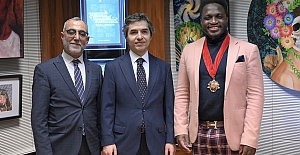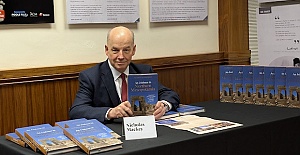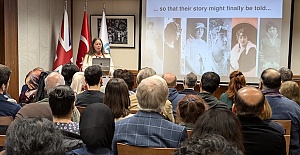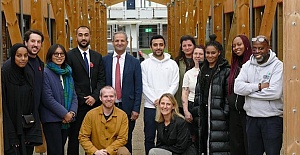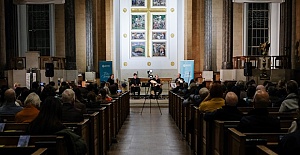Darke opened her presentation by delving into the fascinating origins of Romanesque architecture, a style traditionally credited to Christian Europe’s clergy and patrons. Drawing on research from Islamesque, she argued that many of Europe’s finest medieval structures, such as Mont Saint-Michel, the Leaning Tower of Pisa, and Durham Cathedral, bear the hallmarks of advanced Islamic craftsmanship. Through compelling examples, she demonstrated how techniques developed in Islamic Spain, Sicily, and North Africa—rooted in a deep understanding of geometry and intricate ornamentation—shaped the defining features of Romanesque design. Her insights challenged the conventional narrative, presenting Romanesque as a style profoundly influenced by the Islamic world, one that deserves recognition as “Islamesque.”
On November 28, 2024, acclaimed author and historian Diana Darke presented her latest book, Islamesque, at Yunus Emre Institute London. Guided by architect and academic Shahed Saleem, the event delved into the profound connections between Islamic and Western architectural traditions, drawing an engaged audience of scholars, architects, and cultural connoisseurs.
In the second part of her talk, Darke focused on the human networks that facilitated this remarkable cultural exchange. She shed light on the skilled Muslim masons, carpenters, and sculptors whose expertise flowed into Europe during a time when Christendom lacked comparable knowledge. From the migration of artisans to the translation of architectural treatises, she revealed how these exchanges fostered a shared architectural legacy. By rooting her analysis in historical evidence, Darke dismantled Eurocentric assumptions and emphasized the interconnectedness of medieval architectural traditions. Her nuanced storytelling offered a fresh understanding of Romanesque architecture as a product of cultural dialogue, rather than isolated innovation.
The discussion, enriched by Shahed Saleem’s thoughtful moderation, transitioned into an engaging Q&A session. Audience members posed questions about the political implications of architectural borrowing, the role of colonialism, and the continued relevance of these exchanges in contemporary design.
The evening concluded with a book signing, providing a fitting end to an event that highlighted the intricate connections between cultures in architectural history. Diana Darke’s meticulously researched insights and engaging narrative shed new light on the shared influences of Islamic and Western design, offering a deeper appreciation for the enduring exchange of ideas across centuries


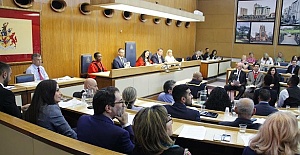 After Nesil Caliskan a by-election will be held in Jubilee ward in Enfield
After Nesil Caliskan a by-election will be held in Jubilee ward in Enfield Publishing the analysis, Labour’s Cllr Ergin Erbil said Everybody in Enfield deserves basic rights
Publishing the analysis, Labour’s Cllr Ergin Erbil said Everybody in Enfield deserves basic rights Gaza-Israel conflict Statement from Cllr Ergin Erbil, Leader of Enfield Council
Gaza-Israel conflict Statement from Cllr Ergin Erbil, Leader of Enfield Council Cllr Ergin Erbil was elected as the new Leader of Enfield Council
Cllr Ergin Erbil was elected as the new Leader of Enfield Council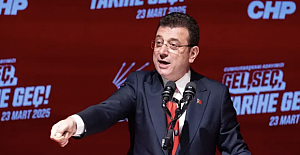 The European Union called on Turkey to uphold democratic values
The European Union called on Turkey to uphold democratic values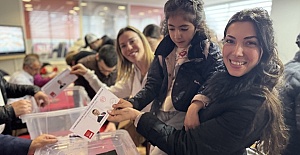 Turkish citizens in London said Rights, Law, Justice
Turkish citizens in London said Rights, Law, Justice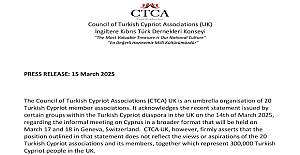 The Council of Turkish Cypriot Associations Geneva response letter
The Council of Turkish Cypriot Associations Geneva response letter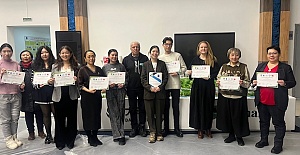 Sustainable Development and ESG, Will This Become the Course for Turkic World
Sustainable Development and ESG, Will This Become the Course for Turkic World Saran Media And Euroleague Basketball Extend Media Rights Partnership for Four More Years
Saran Media And Euroleague Basketball Extend Media Rights Partnership for Four More Years Will Rangers be Jose Mourinho’s next victim?
Will Rangers be Jose Mourinho’s next victim? Jose Mourinho's Fenerbahce face Rangers on Thursday
Jose Mourinho's Fenerbahce face Rangers on Thursday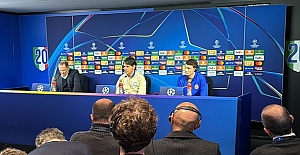 Inzaghi stated that they felt the absence of our national player Hakan Çalhanoğlu
Inzaghi stated that they felt the absence of our national player Hakan Çalhanoğlu Barclays has become the biggest UK lender so far to cut mortgage rates
Barclays has become the biggest UK lender so far to cut mortgage rates THE SPRING STATEMENT EXPLAINED, UK ECONOMIC OUTLOOK AND GROWTH FORECASTS
THE SPRING STATEMENT EXPLAINED, UK ECONOMIC OUTLOOK AND GROWTH FORECASTS Launch of Made in Enfield gift shop to celebrate local artists and designers
Launch of Made in Enfield gift shop to celebrate local artists and designers Trial used smart Wi-Fi sensors for live building occupancy data to optimise
Trial used smart Wi-Fi sensors for live building occupancy data to optimise






